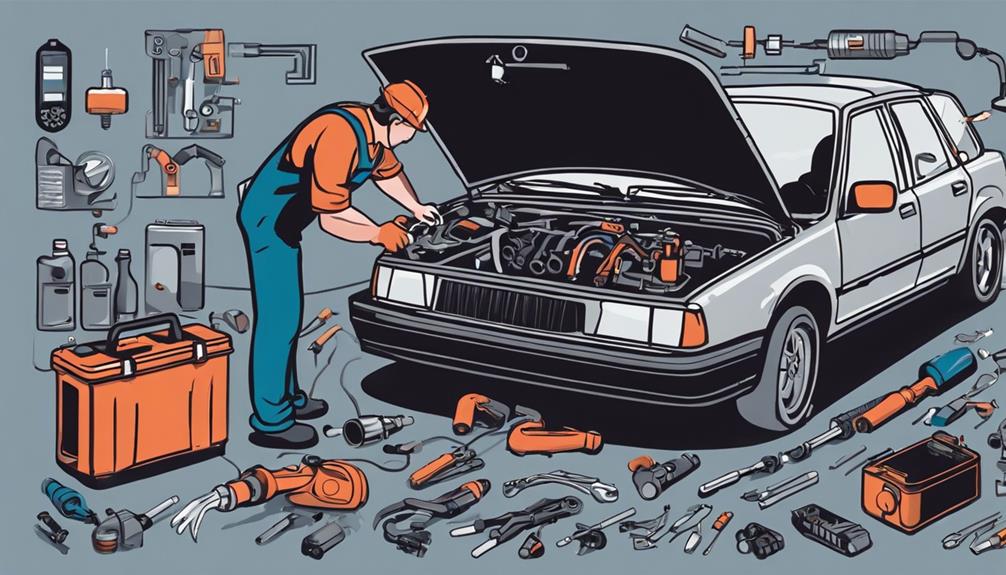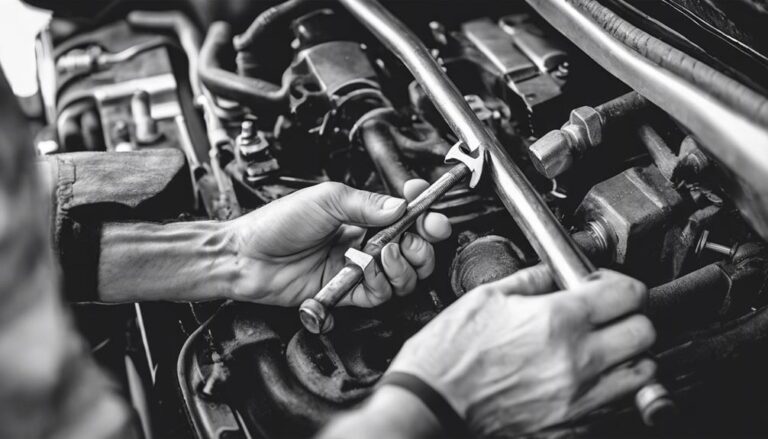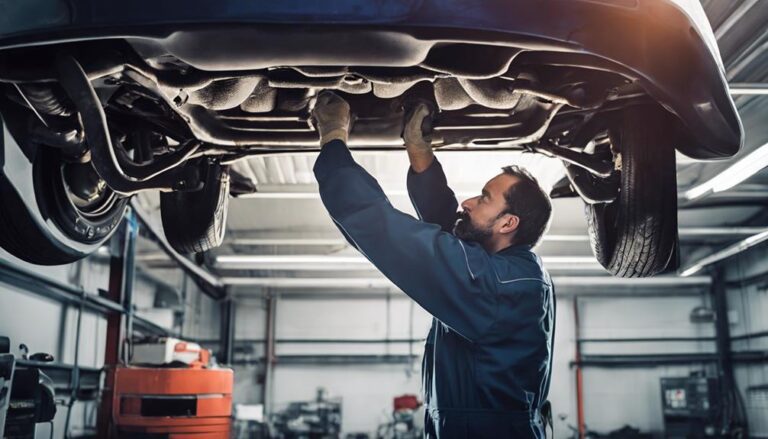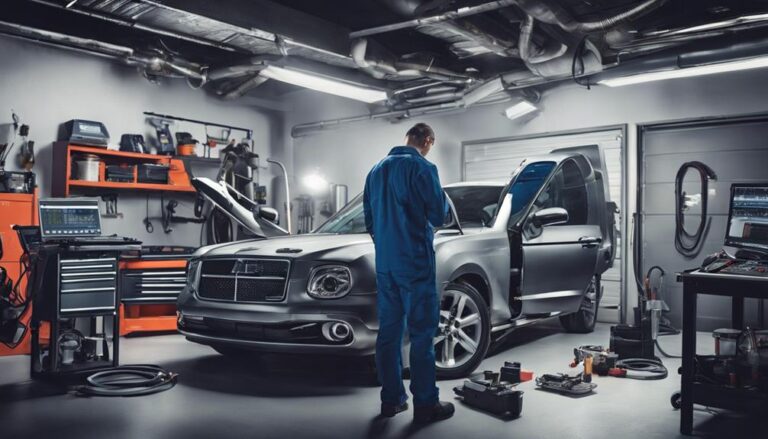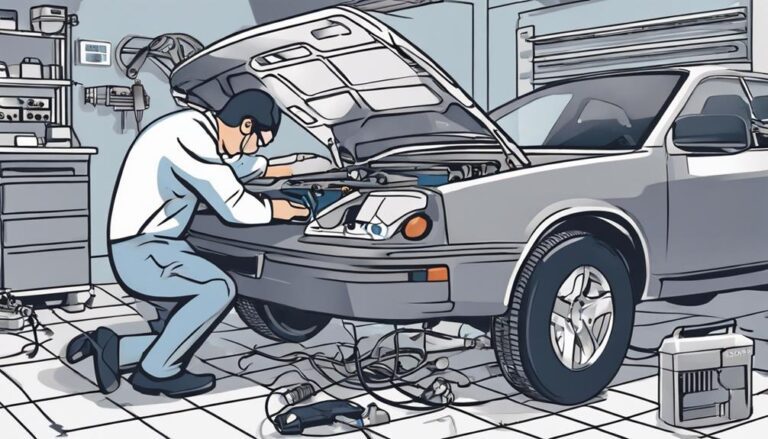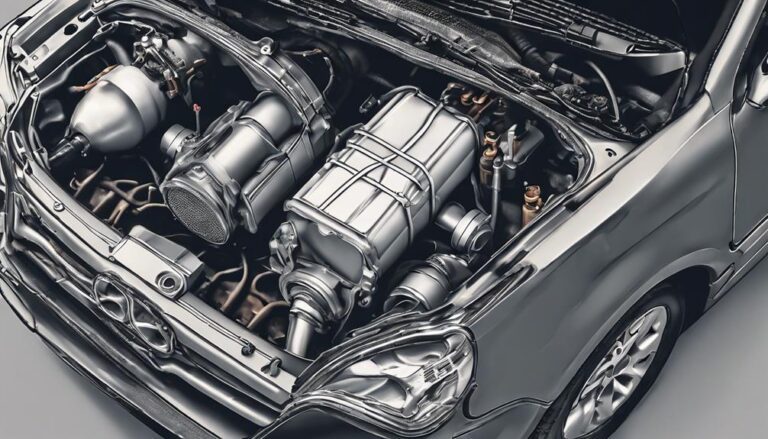Budget-Friendly Emission System Repair Tips
Have you ever wondered if there are simple ways to address emission system issues without breaking the bank?
By exploring practical and cost-effective strategies, you can potentially tackle common problems without draining your wallet.
From quick fixes to preventative measures, understanding how to approach emission system repairs on a budget can be a game-changer for both your vehicle's performance and your finances.
Let's uncover some valuable tips that could help you manage emission system concerns efficiently and economically.
Key Takeaways
- Opt for aftermarket or refurbished parts for cost savings.
- Regularly monitor and replace oxygen sensors for efficiency.
- DIY repairs with online guidance can be cost-effective.
- Prevent issues by tightening gas caps and maintaining filters.
Common Emission System Issues & Solutions
When troubleshooting common emission system issues, start by inspecting the gas cap's tightness and condition. A loose gas cap can lead to fuel evaporation and trigger the check engine light. Tightening or replacing a faulty gas cap is a simple solution that can prevent damage and maintain fuel efficiency.
Faulty oxygen sensors are another frequent culprit. These sensors help regulate the air-fuel mixture, and if they malfunction, it can impact performance and emissions. Regular maintenance, including monitoring and replacing oxygen sensors as needed, can extend the lifespan of your vehicle and reduce harmful emissions.
Additionally, dirty air filters can impede airflow, affecting combustion and emission control. Changing or cleaning air filters is a cost-effective solution to maintain optimal engine performance.
DIY Emission System Repair Techniques
For effective DIY emission system repair techniques, gather the necessary tools and resources before starting any maintenance tasks. Basic tools such as a socket set, wrenches, and a jack can be instrumental in tackling minor emission system repairs. Online tutorials and repair manuals are valuable resources that can guide you through common fixes, making the repair process smoother. Remember to prioritize safety precautions by wearing gloves and eye protection to prevent any injuries while working on your vehicle. Regular maintenance and promptly addressing warning signs can help you avoid more severe and costly emission system issues down the road.
| Tools | Tutorials |
|---|---|
| Socket set | Online repair manuals |
| Wrenches | Video tutorials |
| Jack | Manufacturer guides |
| Safety gear | Community forums |
Cost-Effective Parts Replacement Tips
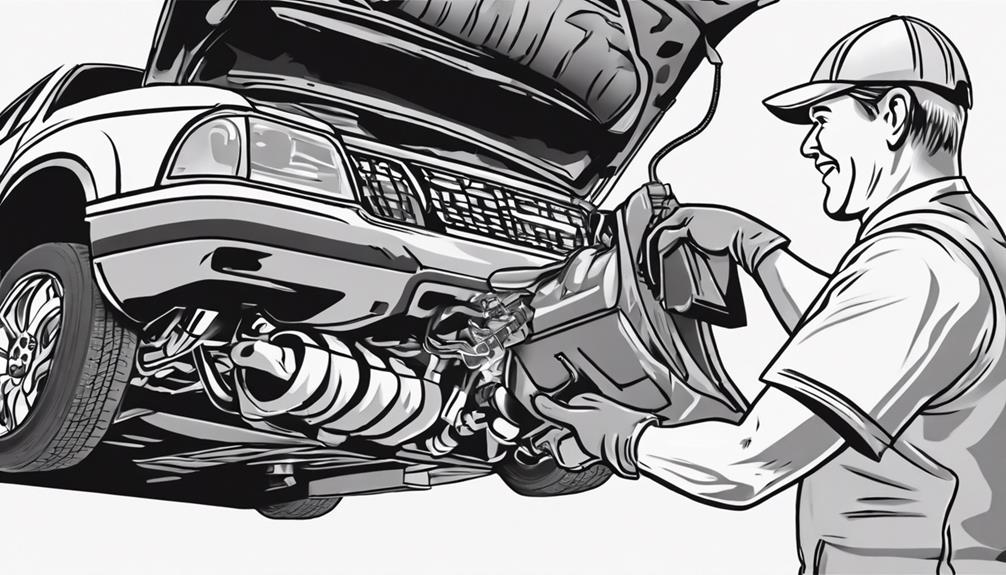
To save on costs while maintaining your vehicle's emission system, consider opting for aftermarket or refurbished parts for replacements. When it comes to catalytic converter replacement or changing the oxygen sensor, aftermarket or refurbished parts can be a cost-effective solution.
Look for parts with warranties to guarantee quality and longevity, providing you with peace of mind. Compare prices from multiple suppliers to get the best deal on replacement parts, making sure you're receiving a fair price.
Utilize online resources and forums to find discounts and promotions on emission system parts, helping you save even more money. Explore DIY options for simple part replacements to save on labor costs, as this can be a budget-friendly approach to keeping your emission system in top condition.
Tips for Preventing Emission System Failures
Regularly checking and tightening the gas cap remains an important preventive measure to avert emission system failures stemming from leaks and evaporation.
To further prevent issues with your emissions system and guarantee peak performance, consider the following tips:
- Change Your Air Filter: Maintaining a clean air filter at recommended intervals helps uphold the correct air-to-fuel ratio, reducing strain on emission system components and enhancing fuel efficiency.
- Monitor Oxygen Sensors: Keep an eye on your oxygen sensors and replace them before they fail to prevent inaccurate readings that can lead to emission system problems and decreased fuel economy.
- Adhere to Scheduled Maintenance: Following a maintenance plan for your catalytic converter can extend its lifespan, avoiding costly repairs and ensuring your vehicle passes emissions tests successfully.
- Ensure Proper Installation: Properly installing sensors and components, such as those related to fuel injection and On-board diagnostics, can prevent malfunctions that trigger the Check Engine light and subsequent emission system failures.
Professional Guidance for Emission Repairs
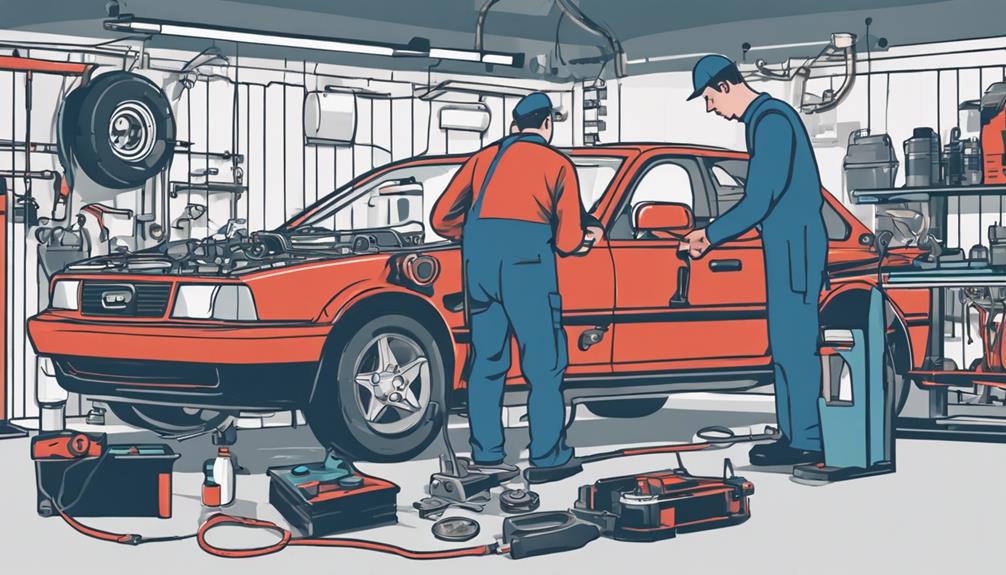
Monitoring and maintaining your vehicle's emission system can be efficiently handled with professional guidance for precise diagnosis and cost-effective repair solutions. Seeking professional assistance for emission repairs guarantees that your vehicle undergoes proper inspection and necessary repairs to maintain engine performance, fuel efficiency, and compliance with emissions tests. Mechanics possess the expertise to identify issues like a faulty oxygen sensor, which can impact your vehicle's emissions and overall performance. By getting professional guidance, you can address these problems promptly, replacing faulty components and conducting essential repairs to make sure your vehicle operates at its best.
Additionally, consulting with professionals for emission system repairs allows you to receive valuable advice on preventive maintenance, helping you avoid costly repairs in the future. When it comes to emission system maintenance, professional guidance is essential for optimizing your vehicle's performance and longevity.
Frequently Asked Questions
How Much Does It Cost to Fix an Emission Control System?
Fixing an emission control system's cost varies based on the issue, from $50 for minor repairs to over $3,500 for major replacements. Routine maintenance can prevent costly repairs. Seeking quotes from reputable shops can save money.
How Do You Fix Emission System Problems?
To fix emission system problems, start with DIY solutions like tightening the gas cap or cleaning the air filter. Address common issues such as faulty oxygen sensors promptly. Regular maintenance and troubleshooting can optimize engine performance and reduce environmental impact. Professional support guarantees accurate emission testing and compliance with legal requirements.
How Do You Fix Emissions Failure?
To fix emissions failure, start with common solutions like tightening the gas cap or replacing a dirty air filter. Use DIY repairs and a troubleshooting guide for cost-effective fixes. Follow maintenance tips for preventive measures. Consider professional help for long-term solutions.
Can You Clear Check Engine Light to Pass Emissions?
You shouldn't clear the check engine light just to pass emissions. Resetting it without fixing the issue can lead to test failure. Seek a mechanic's help for proper diagnosis and repairs to make sure your vehicle meets emission standards reliably.
Conclusion
In summary, implementing these cost-effective emission system repair tips can help you save money and keep your vehicle running smoothly. But remember, there's one vital piece of advice that could make all the difference in preventing costly repairs down the line.
Stay tuned for our next article, where we reveal the ultimate secret to maintaining a healthy emission system without breaking the bank. Stay informed and stay ahead of the game.

